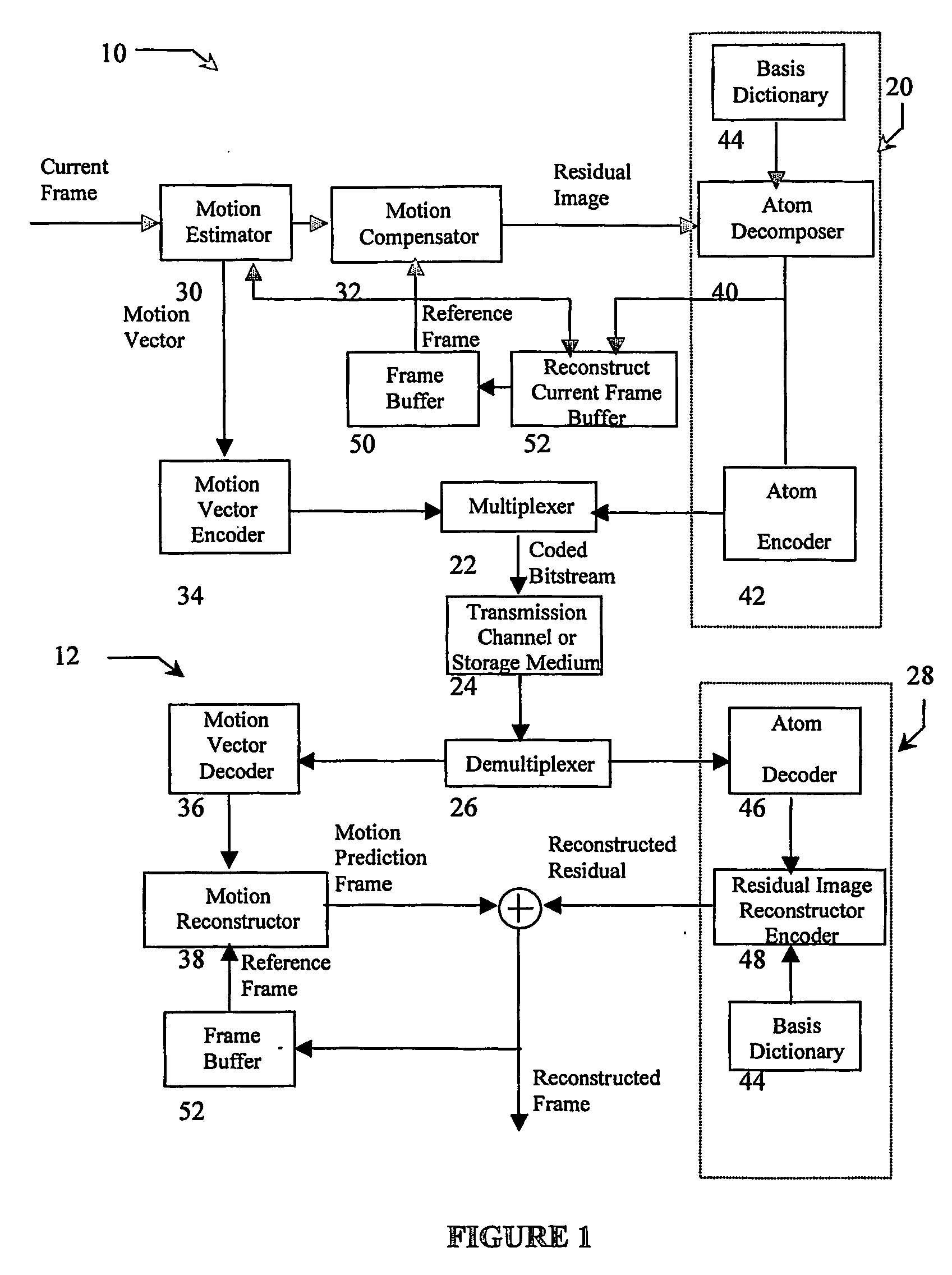Overcomplete basis transform-based motion residual frame coding method and apparatus for video compression
a residual frame and video compression technology, applied in the field of video compression, can solve the problems of reducing the size of the residual image, and requiring very high transmission bandwidth, so as to reduce the energy and reduce the size of the residual imag
- Summary
- Abstract
- Description
- Claims
- Application Information
AI Technical Summary
Benefits of technology
Problems solved by technology
Method used
Image
Examples
Embodiment Construction
[0024]The current invention is an new coder for overcomplete-transform based residual picture coding, used for motion compensated video compression systems. This invention is analogous to previous matching pursuit video coders in that they decompose the residual image into a list of atoms, which represent basis functions from an overcomplete dictionary. The atom finding process, however, is performed using a Residual Energy Segmentation Algorithm (RESA) and a Progressive Elimination Algorithm (EA). The basis dictionary can be very large in order to characterize the features appearing frequently in motion residual images. To find an atom, RESA identifies the approximate shape and position of regions with high energy in the motion residual images such that a good match can be found by comparison with a smaller subset of bases within the dictionary. Furthermore, PEA progressively removes pattern candidates from consideration by pre-computing the energy of search windows, thereby reduci...
PUM
 Login to View More
Login to View More Abstract
Description
Claims
Application Information
 Login to View More
Login to View More - R&D
- Intellectual Property
- Life Sciences
- Materials
- Tech Scout
- Unparalleled Data Quality
- Higher Quality Content
- 60% Fewer Hallucinations
Browse by: Latest US Patents, China's latest patents, Technical Efficacy Thesaurus, Application Domain, Technology Topic, Popular Technical Reports.
© 2025 PatSnap. All rights reserved.Legal|Privacy policy|Modern Slavery Act Transparency Statement|Sitemap|About US| Contact US: help@patsnap.com



